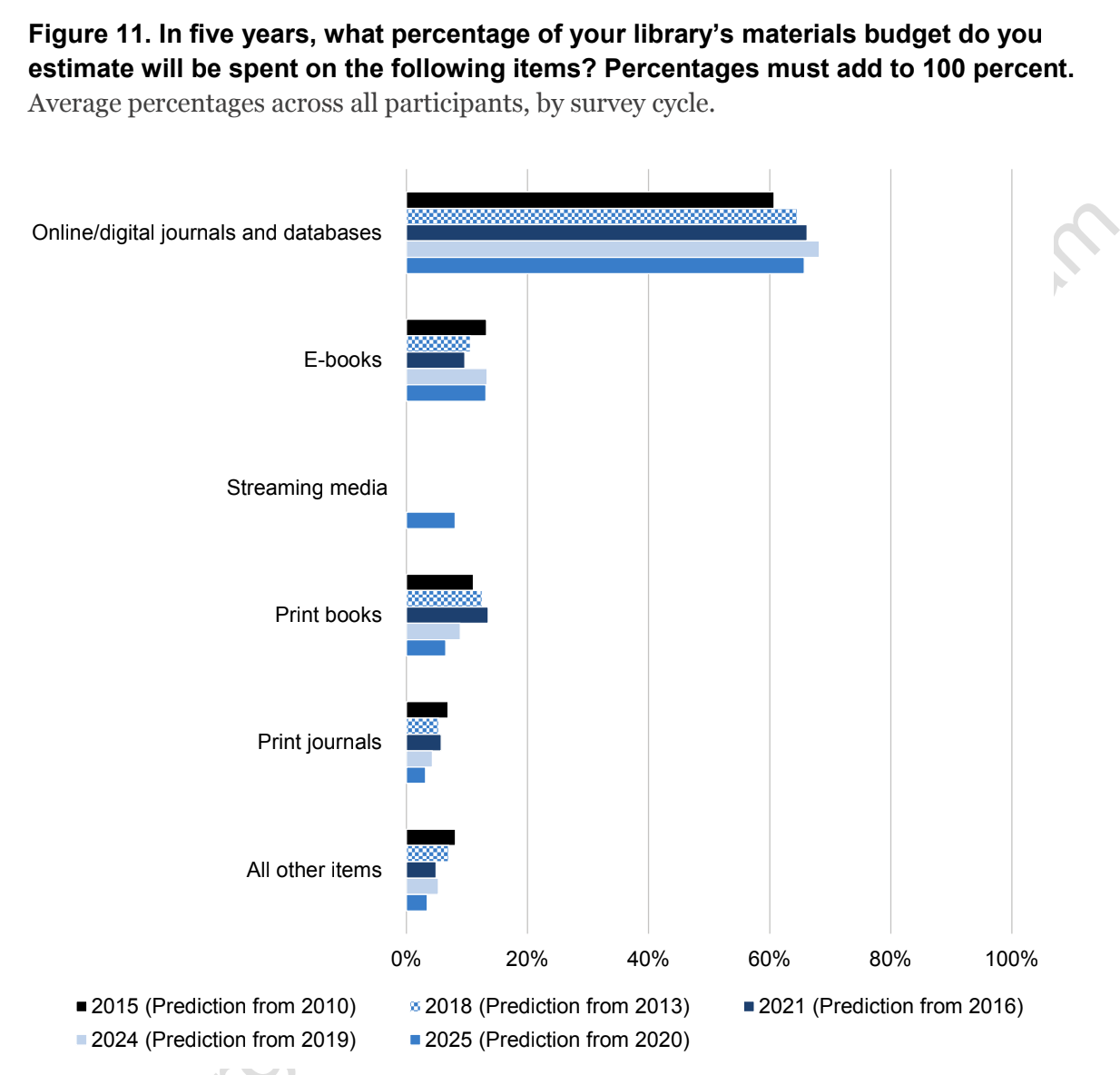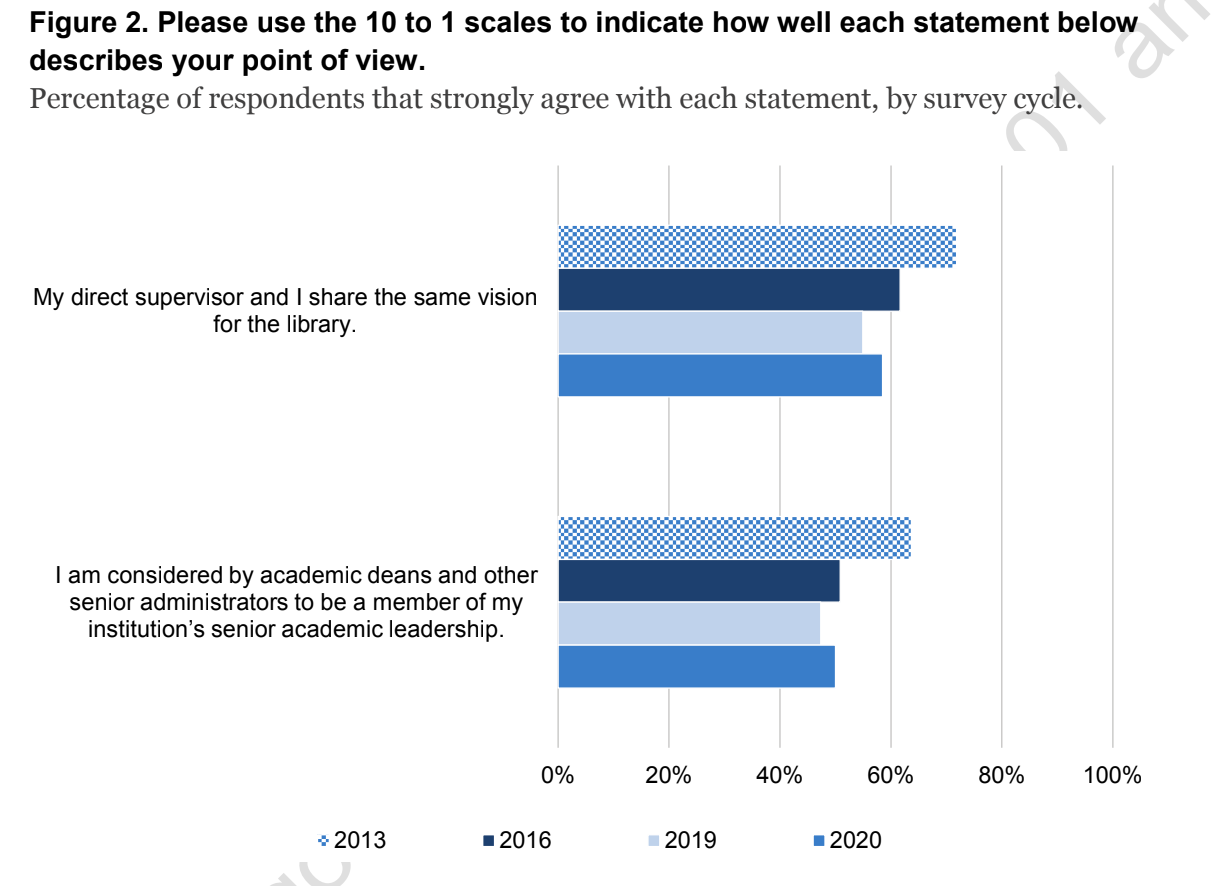Ithaka S+R Releases: “Academic Library Strategy and Budgeting During the COVID-19 Pandemic”
From Ithaka S+R:
While we usually run these [academic library director surveys] on a three-year cycle, after releasing the most recent iteration in April 2020, we recognized that both the COVID-19 pandemic and increasing movements for racial justice were having an immediate impact on academic libraries. In response, we fielded an off-cycle survey this fall to look specifically at how library leaders have changed their priorities in light of the COVID-19 and the extent of their prioritization of equity, diversity, inclusion, and anti-racism in the library.
Jennifer Frederick and Christine Wolff-Eisenberg are publishing the first report of findings from this survey, “Academic Library Strategy and Budgeting During the COVID-19 Pandemic,” this week.
In early 2021 they will publish the findings on the equity, diversity, and inclusion section of the survey
Direct to Full Text Report: Academic Library Strategy and Budgeting During the COVID-19 Pandemic
by Jennifer K. Frederick and Christine Wolff-Eisenberg
DOI: 10.18665/sr.314507

Key Findings
▪ The COVID-19 pandemic reinforced and accelerated trends in library investments toward digital resources and services. Even before the pandemic, libraries were investing more significantly in purchasing and licensing digital collections over time, and the vast majority of library directors anticipate this trend, along with additional investments in virtual services, to continue in the long term. In five years, directors expect their budget allocations toward online journals and databases, e-books, and streaming media to increase, while investments in print resources decrease.
▪ Library leaders feel they have been recognized for being well-positioned and prepared for the emergency pivot to support remote research, teaching and learning. About 70 percent of directors felt their library was well-prepared to pivot to virtual services and believed that other senior leaders also recognized this advantage. This may have contributed to directors perceiving their role as more valued than they did previously, reversing the negative trend of decreasing value across our earlier surveys.
▪ Library directors prioritized staff well-being and organizational finances in their decision-making. Most were able to close and reopen the physical library and allocate changes to collections, operations, and personnel funds fairly independently while consulting other leaders inside and outside of the library. In making these decisions, directors sought to ensure employee safety and well-being at the library. However, in almost one-third of institutions, personnel allocation decisions were made for them by another group in the broader institution. Only slightly more than half had confidence in their institution’s broader safety measures.
▪ Most libraries have experienced budget cuts in the current academic year and there is great uncertainty about longer-term financial recovery. Seventy-five percent of directors have operated with reduced budgets, with most decreases thus far falling between one and nine percent for the 2020-2021 fiscal year. For the 20 percent of libraries where the year’s budget had not been determined by the time of the survey, there are indications that directors have been subject to expenditure controls, needing to pause spending wherever possible. The majority of library directors remain uncertain about whether the library budget will recover after the pandemic.
▪ Personnel cuts have most affected those who work in physical library spaces, though library directors view these spaces as crucial to their long-term mission. Employees in access services, facilities, operations, and security were among those most impacted by furloughs, hour reductions, and layoffs. Despite predominately focusing on providing virtual services and resources during the pandemic, and in turn reducing the staff dedicated to in-person service provision, over eight in ten library directors still see their physical locations as essential for carrying out their missions in the long-term.
▪ Not all types of libraries were affected equally by budget cuts—doctoral universities and public institutions tended to be most impacted. Private baccalaureate college libraries were least likely to experience budget cuts compared to their public counterparts, master’s institutions, and doctoral universities; in fact, roughly half of respondents at private baccalaureate colleges reported not yet having to make any reductions. Public institutions, on average, disproportionately experienced the highest levels of cuts, and doctoral universities were most likely to experience any level of budget reduction.
Direct to Full Text Report
35 pages; PDF.
Filed under: Academic Libraries, Digital Collections, Funding, Interactive Tools, Libraries, News, Publishing
About Gary Price
Gary Price (gprice@gmail.com) is a librarian, writer, consultant, and frequent conference speaker based in the Washington D.C. metro area. He earned his MLIS degree from Wayne State University in Detroit. Price has won several awards including the SLA Innovations in Technology Award and Alumnus of the Year from the Wayne St. University Library and Information Science Program. From 2006-2009 he was Director of Online Information Services at Ask.com.








